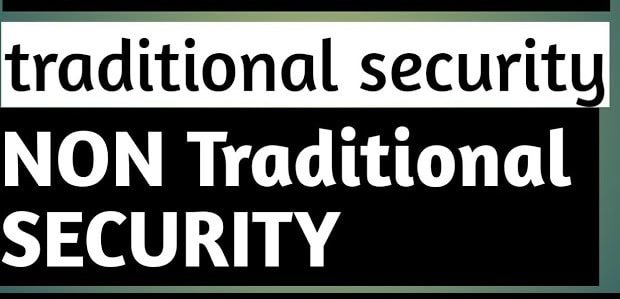When we talk about traditional and non-traditional ways of security, we are basically focusing on how a country or nation uses different methods to secure its people, their land, and resources. These methods usually fall under two categories: traditional aka the good old way, and non-traditional security methods that are much more effective in the 21st century. Today, we will be taking a good look at the key differences between traditional and non-traditional security, so that way, you’ll know which one is more effective, impactful, and long-lasting, you know? And it is actually super important for you aka the general public to learn about these methods because whenever your nation is using these methods, you’ll precisely know what is about to go down. Alright, here we go now.

| Comparison Measure | Traditional Security | Non Traditional Security |
| Nature of Threats | Military, territorial | Environmental, health, terrorism |
| Primary Focus | State sovereignty | Human welfare, global stability |
| Action Takers | Nation-states, military | International organizations, NGOs |
| Methods | Military action, alliances | Diplomacy, policy, cooperation |
| Impact | Regional, direct | Global, indirect |
1. What’s the Deal with Threats?
Alright, let’s dive into the nitty-gritty of Traditional Security first. We’re talking about the big issues here, state-centric threats, you know? This includes the classic showdowns like military face-offs, border brawls, and all that stuff about national sovereignty. Let’s say one country decides to crash another’s party, that’s your textbook traditional security headache. On the flip side, Non-Traditional Security? Oh boy, it’s a whole different ball game. Here we’re dealing with stuff that keeps the global bigwigs up at night, pandemics that don’t care about passports, climate change playing havoc, and terrorism that’s got no fixed address. These ones don’t play by the old rules; they’re global party crashers needing a world-sized team to tackle.
2. Primary Focus and Objectives
When we’re talking about Traditional Security, it’s all about keeping the homeland safe and sound. Think defending the land, keeping the nation’s shape on the map intact, and making sure outsiders don’t get nosy. But hey, flip the script to Non-Traditional Security, and it’s not just about drawing lines in the sand. Nope, it’s the big picture stuff, making sure people everywhere can catch a break, keeping our planet from hitting self-destruct, and generally ensuring everyone’s health isn’t going south. It’s less about flags and more about faces, you know?
3. Players Involved
Now, let’s talk about the players. Traditional Security? That’s the playground of nation-states flexing their military muscle. Think groups like NATO, where countries buddy up for their own club. But wait, when it comes to Non-Traditional Security, the guest list gets way more interesting. We’ve got the usual suspects like the United Nations, but also a bunch of do-gooders and even those big-shot corporations, all rolling up their sleeves to take on the world’s tough issues. It’s like a who’s who of global big shots, all trying to keep the peace and make the world a little less messy.
4. Methods and Strategies
Alright, so when we talk about Traditional Security, what pops up in your head? Big guns, tanks, maybe some intense military action, right? That’s exactly it. Traditional Security is all about flexing those military muscles to either stop someone from causing trouble or to jump into action when they do. It’s like showing off your strength in the schoolyard to keep the bullies at bay. But yeah, flip the coin, and there’s Non-Traditional Security staring right back at us. Now, this one’s a whole different ball game. Think less about brute force and more about smooth talkers in suits, you know, diplomacy and all that stuff. It’s about countries shaking hands, working together, and tweaking policies here and there. The goal? To hit the problems right at their root, way before they grow into monsters.
5. Impact and Scope
Moving on to the impact and, well, how far these security styles reach. Traditional Security? It’s kind of like a one-on-one duel or an issue in your neighborhood. Its effects are right there in your face, immediate and pretty much tangible. We’re talking military showdowns that shape the here and now. But then, there’s Non-Traditional Security. This one’s a different beast. Its ripples are felt globally, and it’s more like playing the long game. You won’t see the results overnight, or even in a couple of years. It’s a marathon, not a sprint, where the world’s in it together for the long haul, fixing things bit by bit over decades, maybe.
Conclusion
Now, there is no debate about which of these security types is actually better because that’s not even a topic. You see, a nation or country uses these methods to secure the people, the borders, and the resources, whenever and however they are necessary. That’s pretty much it. This is exactly the case all around the globe, and if you are into geopolitics, then you probably know about these things very well, right?
Santosh Kumar is a Professional SEO and Blogger, With the help of this blog he is trying to share top 10 lists, facts, entertainment news from India and all around the world.
